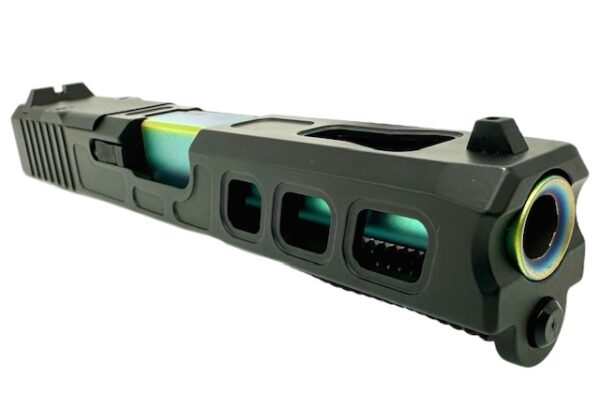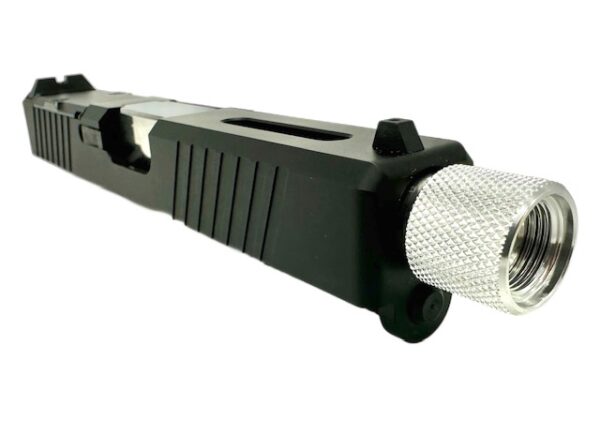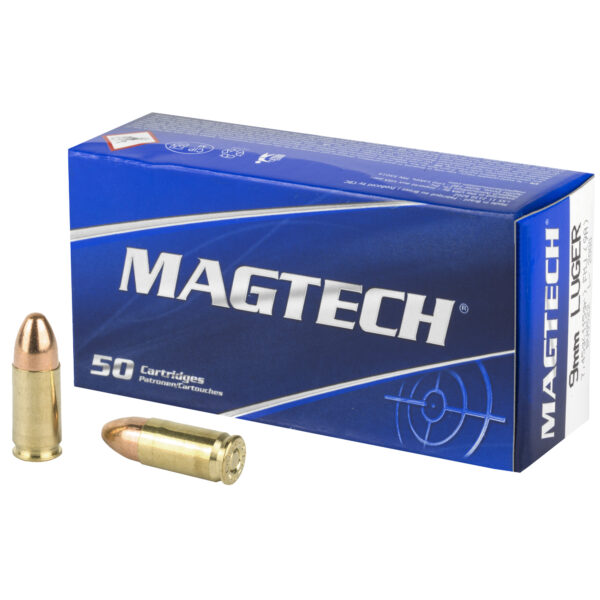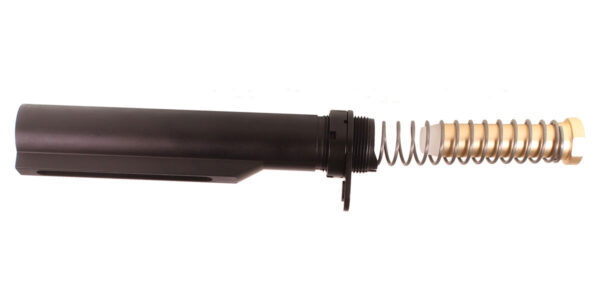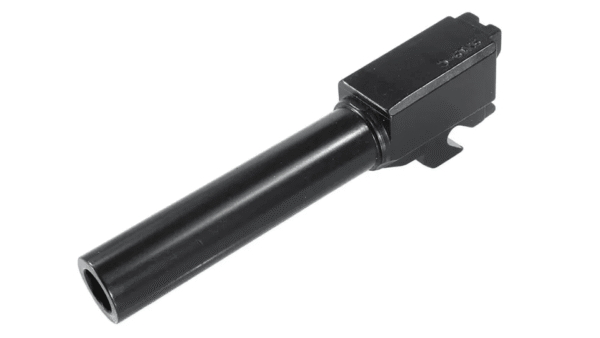Glock Trigger Tuning: The OEM 8‑Pound Connector (SP00735) Explained for Gen 1–5. Glock trigger connector is a critical component in firing mechanism of Glock pistols, serving as the link between the trigger and firing pin. This small but essential part plays a significant role in determining the characteristics of the trigger pull, including its weight, travel distance, and overall feel. The connector is designed to engage with the trigger bar, which in turn interacts with firing pin safety and the striker mechanism.
When pulled, the connector helps to release the striker, allowing the pistol to fire. The design of Glock trigger connector is relatively straightforward, yet its impact on performance is profound. Different connectors can alter the weight of trigger pull, which is measured in pounds.
For instance, a standard connector typically provides a pull weight of around 5.5 pounds, while an 8-pound connector increases this weight, resulting in a firmer trigger pull. This change can enhance safety by reducing the likelihood of accidental discharges, particularly in high-stress situations. Understanding how this component functions is essential for Glock owners who wish to customize their firearms for improved performance or personal preference.
Key Takeaways
- Glock trigger connector is a crucial component that affects trigger pull weight and feel of a firearm.
- Using an 8-pound connector for Glock Gen 1-5 can result in a smoother and lighter trigger pull, improving accuracy and control.
- Installing an OEM 8-pound connector (SP00735) on your Glock is a straightforward process that can be done at home with the right tools.
- The 8-pound connector significantly reduces the trigger pull weight and can enhance the overall shooting experience.
- When comparing the OEM 8-pound connector to aftermarket options, it’s important to consider factors such as reliability, safety, and compatibility with your specific Glock model.
The Benefits of Using an 8-Pound Connector for Glock Gen 1-5
Opting for an 8-pound connector in Glock Gen 1-5 models offers several advantages that cater to both novice and experienced shooters. One of the primary benefits is enhanced safety. A heavier trigger pull can help prevent unintentional discharges, especially in scenarios where quick reactions are necessary.
This added weight requires more deliberate action from the shooter, which can be particularly beneficial for those who may be less experienced or are using their firearm for self-defense purposes. Moreover, an 8-pound connector can contribute to improved accuracy. The increased resistance can encourage shooters to focus on their technique, promoting a more controlled and steady pull.
This can lead to better shot placement, as shooters are less likely to jerk the trigger when they are aware of the additional weight. Additionally, for competitive shooters or those who engage in tactical training, a heavier trigger pull can simulate conditions that require greater discipline and control under pressure. The psychological aspect of knowing that a heavier pull is required can also instill confidence in the shooter’s ability to manage their firearm effectively.
How to Install the OEM 8-Pound Connector (SP00735) on Your Glock
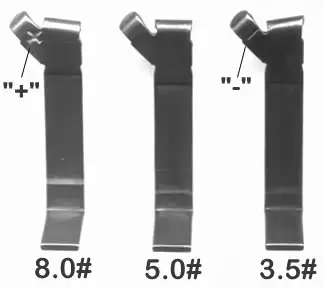
Glock Trigger Tuning: The OEM 8‑Pound Connector (SP00735) Explained for Gen 1–5
Installing the OEM 8-pound connector (SP00735) on your Glock is a straightforward process that can be accomplished with minimal tools and some basic mechanical knowledge. Before beginning, ensure that your firearm is unloaded and that you are working in a safe environment. Start by disassembling your Glock according to the manufacturer’s instructions, which typically involves removing the slide from the frame and taking out the recoil spring and barrel.
Once you have access to the trigger assembly, locate the existing connector. It is usually positioned at the rear of the trigger housing. Using a punch tool or a similar implement, carefully remove the pin that holds the current connector in place.
After removing the old connector, take your new 8-pound connector and insert it into the same slot, ensuring it is seated properly. Reinsert the pin to secure it in place, and then reassemble your Glock by reversing the disassembly steps. It’s advisable to perform a function check after installation to ensure that everything operates smoothly and safely.
The Impact of the 8-Pound Connector on Trigger Pull Weight and Feel
The transition to an 8-pound connector significantly alters both the weight and feel of the trigger pull on a Glock pistol. With this modification, shooters will notice an increase in resistance when pulling the trigger, which can lead to a more deliberate shooting experience. The heavier pull weight requires more effort from the shooter, which can help mitigate issues related to flinching or jerking during firing.
This change can be particularly beneficial for those who may struggle with lighter triggers that can lead to unintended discharges. In terms of tactile feedback, many users report that an 8-pound connector provides a more pronounced break point compared to lighter connectors. This means that shooters may feel a clearer distinction between pre-travel and break, allowing for better control over their shots.
The increased weight can also contribute to a more stable shooting platform, as it encourages proper grip and stance. Overall, while some may initially find the heavier pull challenging, many adapt quickly and appreciate the enhanced control and safety it provides.
Comparing the OEM 8-Pound Connector to Aftermarket Options
When considering trigger connectors for Glock pistols, it’s essential to compare OEM options like the 8-pound connector with various aftermarket alternatives available on the market. Aftermarket connectors often promise lighter pulls or smoother actions, appealing to competitive shooters looking for performance enhancements. However, these modifications can sometimes compromise safety or reliability if not designed with precision.
The OEM 8-pound connector is engineered specifically for Glock firearms, ensuring compatibility and reliability within their design parameters. In contrast, some aftermarket connectors may not undergo rigorous testing or quality control processes, leading to potential issues such as inconsistent pull weights or increased risk of malfunction. While aftermarket options may offer unique features or customization opportunities, they often come with trade-offs that could affect performance under stress or during critical situations.
Addressing Safety Concerns and Reliability with the 8-Pound Connector
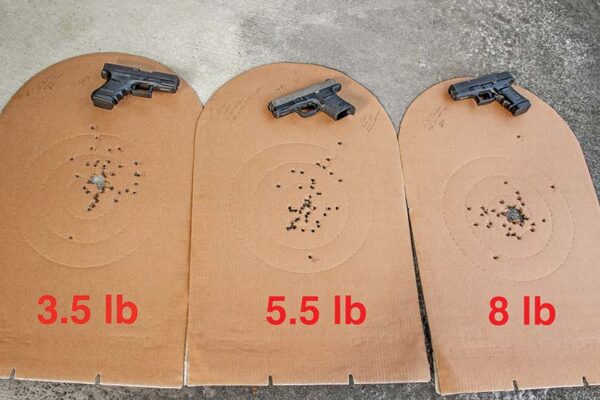
Glock Trigger Tuning: The OEM 8‑Pound Connector (SP00735) Explained for Gen 1–5
Safety is paramount when it comes to firearms, and any modification made should prioritize this aspect above all else. The introduction of an 8-pound connector into a Glock pistol inherently enhances safety by increasing trigger pull weight. This added resistance reduces the likelihood of accidental discharges during handling or when drawing from a holster.
For individuals who carry their firearms for self-defense purposes, this feature can provide peace of mind knowing that an unintentional discharge is less likely. Reliability is another critical factor when discussing trigger connectors. The OEM 8-pound connector is designed to work seamlessly with other components within Glock pistols, ensuring consistent performance over time.
In contrast, some aftermarket connectors may not maintain this level of reliability due to variations in manufacturing quality or design flaws. Users must consider whether any potential benefits from aftermarket options outweigh the risks associated with decreased reliability or safety concerns.
Tips for Fine-Tuning Your Glock Trigger with the OEM 8-Pound Connector
Fine-tuning your Glock trigger after installing an OEM 8-pound connector can enhance your shooting experience even further. One effective method involves adjusting your grip and stance to accommodate the increased pull weight. A firm grip can help manage recoil and improve shot placement by allowing for better control during firing sequences.
Additionally, practicing dry firing can help you acclimate to the new trigger feel without live ammunition. Another tip involves experimenting with different types of ammunition to find what works best with your modified trigger setup. Some ammunition may produce different recoil characteristics or affect how you perceive trigger pull weight during shooting sessions.
By testing various loads at the range, you can identify which combinations yield optimal performance and comfort for your shooting style.
Exploring the Legal and Competitive Shooting Implications of Using the 8-Pound Connector
The legal implications of using an 8-pound connector in your Glock can vary depending on local laws and regulations regarding firearm modifications. In many jurisdictions, modifications that enhance safety or reliability are generally permissible; however, it’s crucial to stay informed about specific laws governing firearm modifications in your area. For competitive shooters participating in sanctioned events, understanding how modifications like an 8-pound connector affect eligibility is essential as different organizations may have varying rules regarding trigger weights.
In competitive shooting scenarios, using an 8-pound connector may provide advantages in terms of control and accuracy under pressure. However, competitors must also consider how this modification aligns with their overall strategy and shooting style. Some may find that a heavier trigger pull enhances their performance by promoting discipline and focus during competitions, while others may prefer lighter options for quicker follow-up shots.
Ultimately, understanding both legal considerations and competitive dynamics will help shooters make informed decisions about their firearm modifications.
If you’re interested in enhancing your Glock’s performance through trigger tuning, you might also want to explore other firearm accessories that can complement your setup. A related article that could be of interest is Online Gun Parts and Firearms Accessories. This article provides insights into various gun parts and accessories available online, which can help you customize and optimize your firearm to suit your specific needs. Whether you’re looking to improve accuracy, comfort, or overall functionality, understanding the range of available accessories can be a valuable step in your firearm customization journey.


